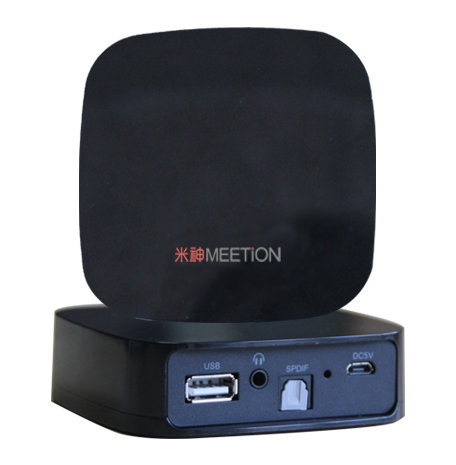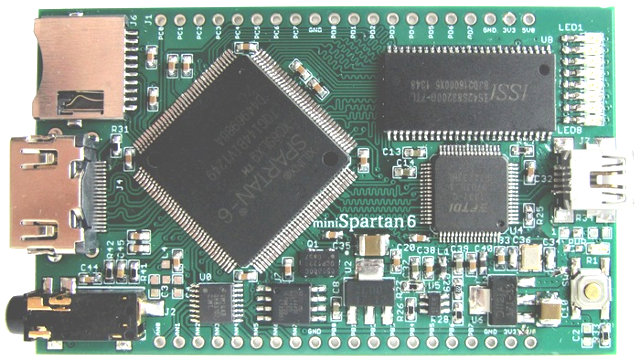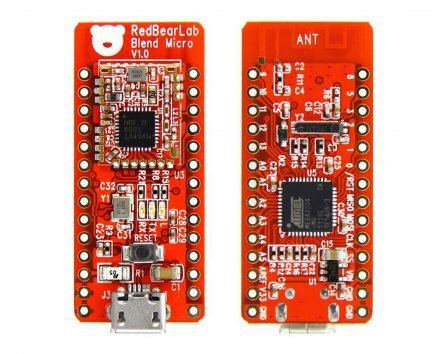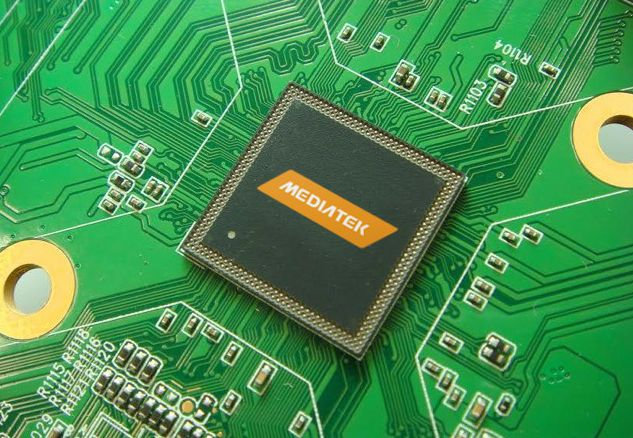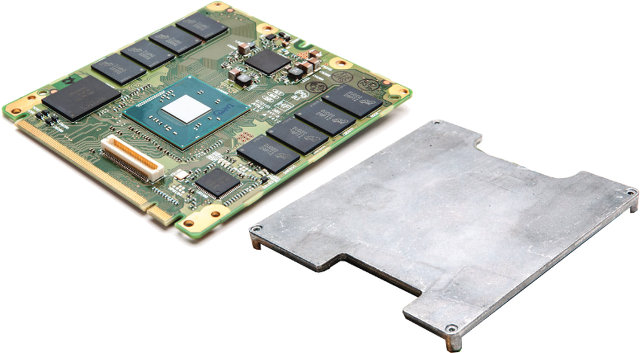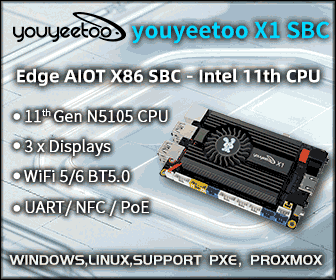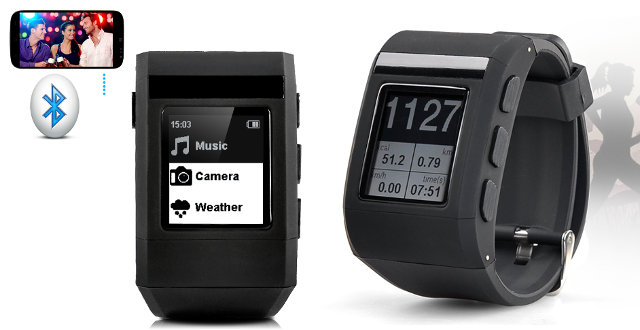There are several ways to play music wirelessly from your devices on decent speakers. One the best way might be one of the Sonos Wi-Fi speakers, but they costs a few hundred dollars. You could also use a ChromeCast or EZCast / Miracast / DLNA dongle, both of which are very cheap ($20 to $35), and would allow you to stream music to your TV from your Android or iOS mobile device, Windows PC or Mac OS computers, but these require you leave your TV on, unless you use a DLNA dongle with an AV port. Another option would be to use a dedicated Wi-Fi player such as Meetion MT-WF910 which can receive audio from mobile devices or computers via Wi-Fi, and output it to a 3.5 mm stereo jack or S/PDIF port. Meetion Wi-Fi player specifications and key features: SoC – Qualcomm Atheros AR9331 processor for Wi-Fi and audio […]
$69 miniSpartan6+ Board with Xilinx Spartan 6 FPGA Features an HDMI Port (Crowdfunding)
I’ve already featured sub-$100 Xilinx Spartan 6 boards in this blog such as The Mojo and Arduissimo. There’s now another with Scarab Hardware‘s miniSpartan6+ which also includes an HDMI port, and is currently available for $69 on Kickstarter. This board could be used as a logic analyzer, a multimedia player, a game console emulator, an Arduino emulator, a stereo vision camera, and more. miniSpartan6+ specifications: FPGA- Xilinx Spartan6 LX9 System Memory – 32 MB SDRAM Storage – 64Mbit SPI Flash + micro SD card Video Output – HDMI Audio Output – Stereo audio output jack using 1-bit sigma-delta DAC USB – Micro USB OTG port Debugging – On-board USB JTAG programmer I/Os via breadboard friendly through holes 8-channel ADC running at 1 MSPS with 8 bit resolution. 24 Digital I/O pins. Misc – 8 LEDs. Dimensions – 4.57 x 7.62 cm Programming can be done with the company’s Scarab IDE, […]
Blend Micro Arduino Board Integrates Bluetooth 4.0 Low Energy Connectivity for 25 Euros
RedBearLab’s Blend Micro is an Arduino compatible board with Bluetooth 4.0 Low Enery (aka Bluetooth Smart) connectivity, that’s part of Arduino-at-heart, a partner program initiated by the developers of Arduino boards. It has been made to help design low power Internet-Of-Things (IoT) projects quickly and easily. Blend Micro technical specifications: MCU – Atmel ATmega32u4 @ 8 MHz with 32KB flash (4KB used by bootloader), 2.5 KB SRAM, and 1KB EEPROM. Connectivity – Bluetooth 4.0 Low Energy via Nordic nRF8001 chip USB – 1x micro USB port I/Os: Serial (Tx/Rx) I2C, SPI PWM U to 16 Digital I/Os Up to 6 Analog inputs Operating Voltage – 3.3V Input Voltage – 5V (USB), and 3.3-12V (VIN) Power Consumption – 2mA (average – using Interrupt mode) Dimensions – 43.6 x 18.4 x 4.3mm Weight – 4g The specs are very similar to BLEDuino, except it’s slightly smaller. Blend Micro can communicate with BLE […]
MediaTek MT8127 SoC to Bring H.265 Video Support to Mid-Range Android Tablets
MediaTek has just announced MT8127, a quad core ARM Cortex A7 processor @ 1.5 GHz with Mali-450MP GPU, that provides hardware support for HEVC (H.265) video playback, and targets “super-mid” range Android tablets. HEVC/H.265 video codec will allow to half the required bandwidth and/or storage for a given quality compared to H.264, or to greatly improve quality at the same bitrate. The latest Mediatek processor will also support 1080p video playback and recording, and up to 13MP cameras, as well as 1920×1200 LCD screen display. As with other Mediatek SoCs, a Bluetooth 4.0, Wi-Fi, FM receiver and GPS combo-chip can be coupled with MTK8127. The company also claims Miracast and NFC support. The first tablets to integrate this solution will be ALCATEL ONETOUCH PIXI 7 and Cube U25GT, as well as ALCATEL ONETOUCH PIXI 8, which will be launched later this year. Via Liliputing
Intel Unveils In-Vehicle Solutions and Development Kit for Assisted Driving and Autonomous Cars
Intel has announced their In-Vehicle Solutions (IIVS) for automakers comprised of hardware based on Intel’s industrial Bay Trail Atom 3800 series SoC, and software solutions relying on a Linux based operating system but it’s not clear whether it might be Wind River Linux, Tizen IVI, or another new OS. The solutions will first provide In Vehicle Infotainment (IVI) with assisted driving features such as , and over time it will allow semi-autonomous and self-driving cards. At the heart of the system, Intel will provide CM1050 computer-on-module that will be part of a development kit including a chassis with CAN, Ethernet, and USB ports, as well as audio and CVBS multimedia I/Os, and radios and antennas for FM, AM, DAB, GPS, WiFi, Bluetooth, and cellular. A Blu-ray drive, and SSDs will be available as storage options. The complete system is designed to be upgradeable, and automakers can expected modules with faster […]
WifiDuino Arduino Compatible Wi-Fi Board Features an Optional OLED Display (Crowdfunding)
Getting Wi-Fi with Arduino can be relatively expensive, and may take a little too much space. Spark Core board greatly addressed both price ($39) and form factor issue last, but there’s another option coming to market thanks to WifiDuino a $34 board with Wi-Fi, that’s tiny and Arduino compatible. An OLED display is also available as an option, at a lower price point than MicroView board, and including Wi-Fi or not, depending on the perk. WifiDuino hardware specifications: MCU – Atmel Atmega32U4 (same as Arduino Leonardo) Display – Optional 128×64 OLED display Connectivity – Optional Wi-Fi 802.11 b/g with STA, AP and ADHOC network modes Digital I/Os – 20 Analog I/Os – 12 Other I/Os – 7x PWM, UART, I2C, SPI Power – 5V Dimensions – Duino board only without Wi-Fi nor OLED: 25.6mm x 38.8mm x 11.0mm WifiDuino support the Arduino IDE, so you can write you sketch as […]
$80 Zebble WaterProof Smartwatch Features an E-Paper Display, Just like the Pebble…
The Zebble smartwatch does not look exactly like the Pebble, but it still share lots of the features found in the original watch including a 1.2″ e-paper display with 144×168 resolution, Bluetooth connectivity, similar buttons placements, and sells for nearly half the price of the original Pebble at $79.99 on Chinavasion. Zebble specifications provided on Chinavasion: MCU – Unknown @ 48 MHz Display – 1.26″ e-Paper display @ 144×168 with touchscreen Connectivity – Bluetooth 3.0 Misc – Built in Vibrator IP ratings – IP67 Waterproof and dustproof Battery – 240mAh Li-on. Standby Time: 10 Days. Dimensions – 40x222x13 mm (L x W x D) Weight – 49g Temperature Range – Operating: -10 to +60 Degrees Celsius; Battery charging temperature: 0 to +45 Degrees Celsius The watch is said to support Android 4.0 and above, without mention of iOS support. It can be used for smartphone sync for texting, or answering […]
AsiaRF AWM002 Wi-Fi Module and a Tiny IoT Server Kit Get Crowdfunded for $15 and Up
VoCore Wi-Fi module selling for $15 to $20, and it’s corresponding VoCore Dock with Ethernet has been quite popular, and at the time of writing, the project has already received $40,000 in funding with 50 more days to go. But if you’d rather get something for the same price, a few months early, and an already FCC/CE certified and proven module and tiny IoT server, AsiaRF has also launched a crowdfunding campaign for their AWM002 Wi-Fi module running OpenWRT on the same Ralink RT5350 found on the VoCore. as well as AWM002 Tiny Kit which adds Ethernet and USB, and a larger board with easier access to all ports and I/Os. As a reminder, let’s go through AWM002 specifications again: SoC – Mediatek/Ralink RT5350 MIPS 74KEc core @ 360 MHz dual band 802.11n Wi-Fi with data Rate up to 150Mbps, hardware NAT, QoS, TCP/UDP/IP checksum offloading. System Memory – 32 MB Storage […]


